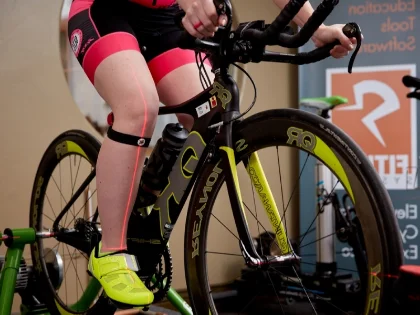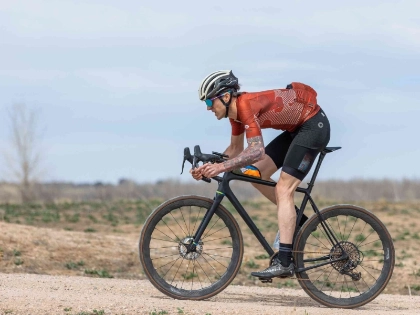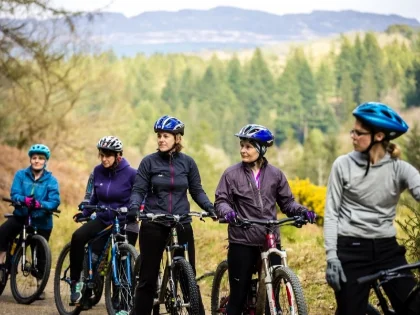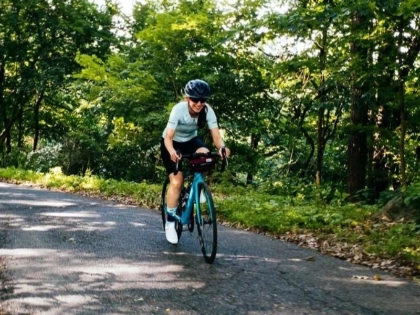How Can I Get Into Cycling?
Cycling is a fantastic calorie-burning and body-toning workout. In addition, its modest impact lowers the possibility of harm. Anyone may become a cyclist with the correct skill and practice, even though learning to ride a bike may take some time and a few falls. Find a secure location to train on level, smooth terrain during the day.
Get the Fundamentals
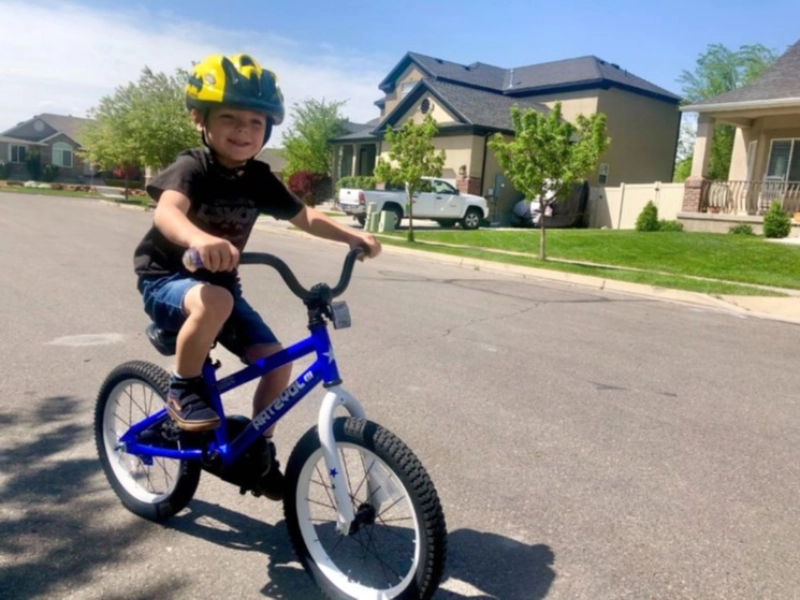 Understanding the fundamentals of riding is the first step towards becoming a cyclist. Although learning the talent takes time, it's not difficult. Remain persistent and patient.
Begin in a secure, traffic-free area. Get a support person to run behind you and assist with bike balancing after you can ride without falling. Gaze forward instead of down at your feet, as this enhances your body's internal equilibrium and guidance.
Learn how the gears function to change the resistance or speed at which you can pedal as you ride more. You can use this to gradually increase the length of your rides or your cycling fitness.
As you begin training, consume a nutritious diet and refrain from severe calorie restriction. Your body may not adapt negatively as a result, particularly in the areas surrounding your joints. Make it a goal to add roughly 10% more riding time each week, and remember to take a day or two off! Along with having the required equipment and components on hand when you ride, you should also be ready to perform simple repairs on your bike.
Understanding the fundamentals of riding is the first step towards becoming a cyclist. Although learning the talent takes time, it's not difficult. Remain persistent and patient.
Begin in a secure, traffic-free area. Get a support person to run behind you and assist with bike balancing after you can ride without falling. Gaze forward instead of down at your feet, as this enhances your body's internal equilibrium and guidance.
Learn how the gears function to change the resistance or speed at which you can pedal as you ride more. You can use this to gradually increase the length of your rides or your cycling fitness.
As you begin training, consume a nutritious diet and refrain from severe calorie restriction. Your body may not adapt negatively as a result, particularly in the areas surrounding your joints. Make it a goal to add roughly 10% more riding time each week, and remember to take a day or two off! Along with having the required equipment and components on hand when you ride, you should also be ready to perform simple repairs on your bike.
Get a Bike
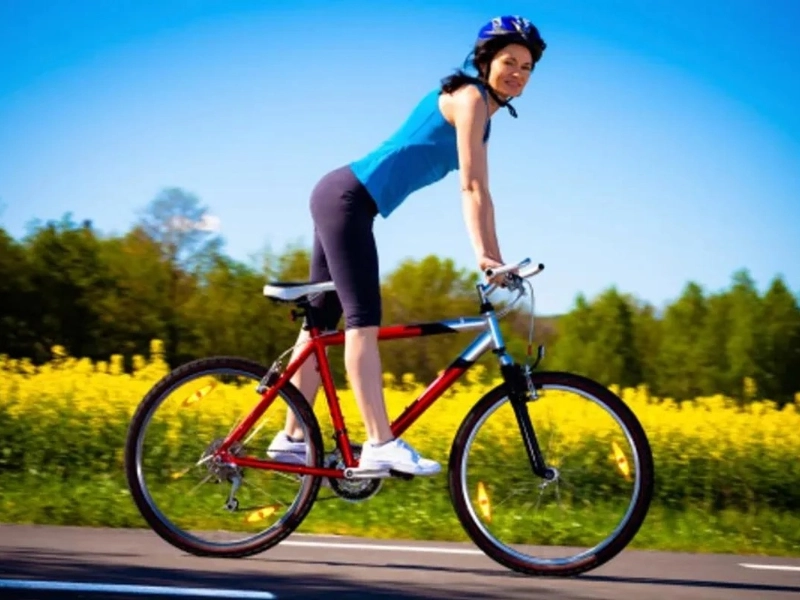 Visit your neighborhood bike shop or conduct some internet research if you don't own a bike or if your existing one requires maintenance. Bikes are available in a variety of price points, from extremely inexpensive to very costly.
To assist novices develop strength and endurance, Clucas suggests a program that gradually increases riding time and intensity over a predetermined number of weeks. "You want to get yourself up to a level where you can hold a conversation without a lot of effort, on a scale of 1 to 10, 10 being sprint-style," she explains.
You may stay motivated to challenge yourself and stay involved in the sport by setting long-term goals, such riding a specific number of days a week or registering for a gran fondo or charity ride. Eating a healthy diet rich in fruits, vegetables, lean meats, and healthy fats will help you perform better when cycling.
Visit your neighborhood bike shop or conduct some internet research if you don't own a bike or if your existing one requires maintenance. Bikes are available in a variety of price points, from extremely inexpensive to very costly.
To assist novices develop strength and endurance, Clucas suggests a program that gradually increases riding time and intensity over a predetermined number of weeks. "You want to get yourself up to a level where you can hold a conversation without a lot of effort, on a scale of 1 to 10, 10 being sprint-style," she explains.
You may stay motivated to challenge yourself and stay involved in the sport by setting long-term goals, such riding a specific number of days a week or registering for a gran fondo or charity ride. Eating a healthy diet rich in fruits, vegetables, lean meats, and healthy fats will help you perform better when cycling.
Obtain a Helmet
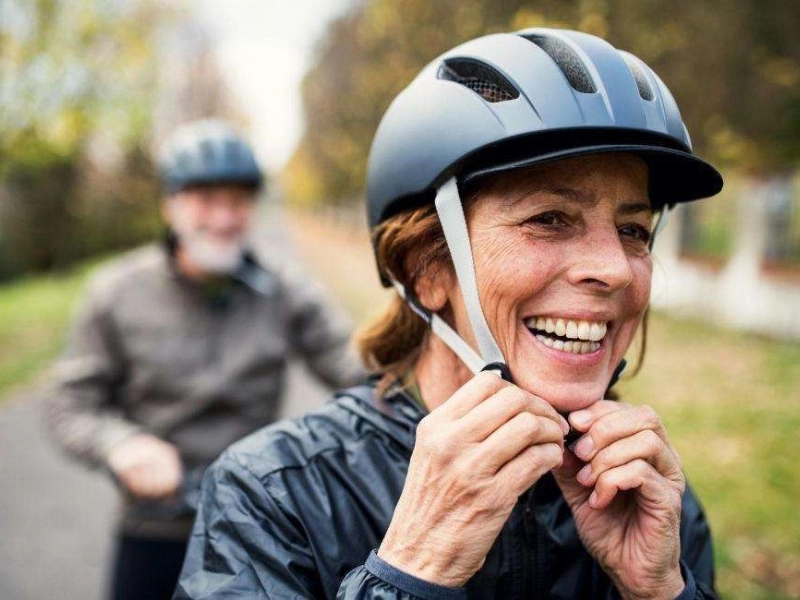 A decent helmet is a must if you want to avoid suffering a catastrophic head injury when riding a bike. Getting your kids started on wearing helmets early on is a terrific approach to create a lifelong habit of safe riding.
Your helmet will be fitted by the bike store, and it's well worth the extra money to obtain one that satisfies strict safety requirements. Another essential, according to Seacat, is padded spandex shorts with bib straps. They keep your legs from chafing while you ride and maintain the proper position for more effective pedaling.
Finally, as you increase your distance and intensity, remember to eat enough. Riding a bicycle consumes a lot of calories, and your glycogen stores are not infinite. Refuel with beverages, energy gels, or a substantial portion of Actual FoodTM. Purchasing a water bottle with a cage to hold it on your frame is also a smart option.
A decent helmet is a must if you want to avoid suffering a catastrophic head injury when riding a bike. Getting your kids started on wearing helmets early on is a terrific approach to create a lifelong habit of safe riding.
Your helmet will be fitted by the bike store, and it's well worth the extra money to obtain one that satisfies strict safety requirements. Another essential, according to Seacat, is padded spandex shorts with bib straps. They keep your legs from chafing while you ride and maintain the proper position for more effective pedaling.
Finally, as you increase your distance and intensity, remember to eat enough. Riding a bicycle consumes a lot of calories, and your glycogen stores are not infinite. Refuel with beverages, energy gels, or a substantial portion of Actual FoodTM. Purchasing a water bottle with a cage to hold it on your frame is also a smart option.
Prepare to Take Off
 It's time to go riding once you have the appropriate bike and gear. Locate a level area where you may practice pressing the pedals with your foot and rotating the wheels. You may improve your inner balance and direction by maintaining your head up and concentrated, rather than looking down at the road. Always let someone know where you're going and when you intend to return if you're riding alone. A built-in or easily addable device that enables riders to send a tracking link to loved ones via their smartphone is found on many bikes.
If you've never ridden a bike before, begin with two or three sessions of 30 to 60 minutes of endurance riding per week, then progressively increase the duration and intensity. Make sure you give your body the right nutrition to prevent weariness and dehydration. Most cyclists should be able to meet their nutritional needs with a diet high in fruits, vegetables, lean proteins, and natural fats; but, for longer rides, specialty energy gels, goos, and bars may be useful.
It's time to go riding once you have the appropriate bike and gear. Locate a level area where you may practice pressing the pedals with your foot and rotating the wheels. You may improve your inner balance and direction by maintaining your head up and concentrated, rather than looking down at the road. Always let someone know where you're going and when you intend to return if you're riding alone. A built-in or easily addable device that enables riders to send a tracking link to loved ones via their smartphone is found on many bikes.
If you've never ridden a bike before, begin with two or three sessions of 30 to 60 minutes of endurance riding per week, then progressively increase the duration and intensity. Make sure you give your body the right nutrition to prevent weariness and dehydration. Most cyclists should be able to meet their nutritional needs with a diet high in fruits, vegetables, lean proteins, and natural fats; but, for longer rides, specialty energy gels, goos, and bars may be useful.



